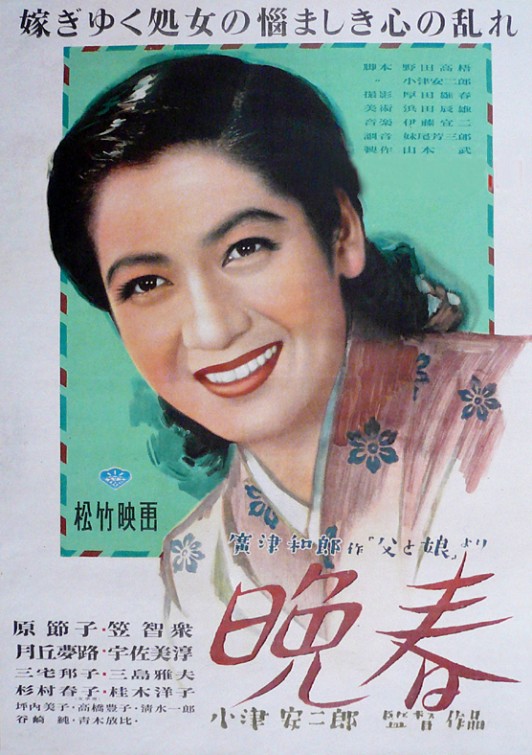As an amateur film lover, my knowledge of Japanese cinema has been by a handful of Kurasawa pictures and various Kaiju smash-em-ups. I have always accepted that I exist in a sphere of naiveté when it comes to foreign films, a trait that I am eager to shed with this project. From 1949, Late Spring by Yasujiro Ozu, number 15 on the BFI Top 50 list, is the first classic non-period, non-Kaiju, film from Japan I have watched and I am floored.
Late Spring is a movie about the shifting traditions in a post-war Japan. It stars Setsuko Hara as, Noriko, the daughter, and Chishu Ryu as Shukichi, her father. The central theme of the film is the marriage of Noriko, now twenty-seven, that her aunt is trying to arrange. As pointed out in the commentary, there is no history given about a mother or, possibly, brothers; however, as the war has recently ended it is fair to assume that the mother is dead leaving only Noriko and Shukichi.
What stunned me the most was the feminine strength that Noriko, and her friend Aya portray. My expectation was something of an obedient girl, as I have seen in so many pictures in the past, but the relationship between Noriko and Shukichi resembles more of a modern relationship rather than the authoritarian patriarch that is common in classic film. The same follows for many of Noriko’s relationships with the other men in the film; there is a certain level of sass that is a fresh, and welcome, shift.
I mention Aya, as well, as a necessary character, with the Japanese Constitution of 1947 recognizing the equality of women; she plays Noriko’s recently divorced, career-minded, friend. She marries out of love and quickly learns that, Ken, her ex-husband, was not suitable by her standards, so she instigates divorce. This is a stark difference from what I am used to seeing.
The theme of the film being marriage, but we see the life of a daughter who does not seem interested in marrying, surrounded by a widowed father; a divorced friend; a married, and meddling, aunt; and Shukichi’s assistant, Hattori, an engaged pseudo-suitor. Noriko is engulfed with the variations of society and seems more interested in friendship than an arranged marriage. There is a very tender scene between Hattori and Noriko, after a brilliantly shot bicycle ride before it is revealed that Hattori is engaged, showing the mutual respect that Noriko has for her friends.
Without having seen many of Ozu’s films, or the rest on the list, it is difficult to tell why Late Spring specifically received the votes that it did. That is not to say that I could, or even would in this case, leave it off the list. It is a wonderful and moving picture that I have already, two hours after my second viewing (in as many days), recommended to people. On the strength of its characters; the changing idea of family; and the questions the film raises about marriage, arranged or otherwise, this movie from 1949 will likely stand out on my future lists of must-see films.
Presentation
In regards to the presentation, I watched the Criterion Collection Blu-ray and feel a little let down by the quality of the picture. I have no doubt that this will be the greatest that the film will ever look considering the source. This does not detract from the content, but the scratches and other flaws are easily recognizable. Based on their transfer notes I can only assume that they had very little to work with as they list extensive cleaning in the restoration that they performed.
I was not able to find a trailer, so here is the 3 Reasons video that Criterion released.
Important Links


